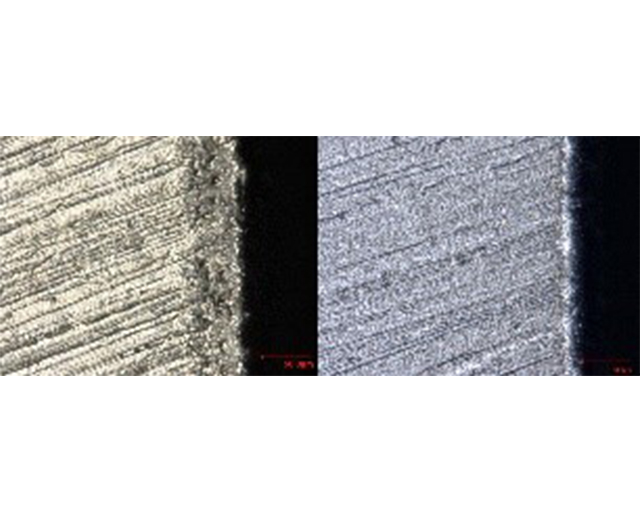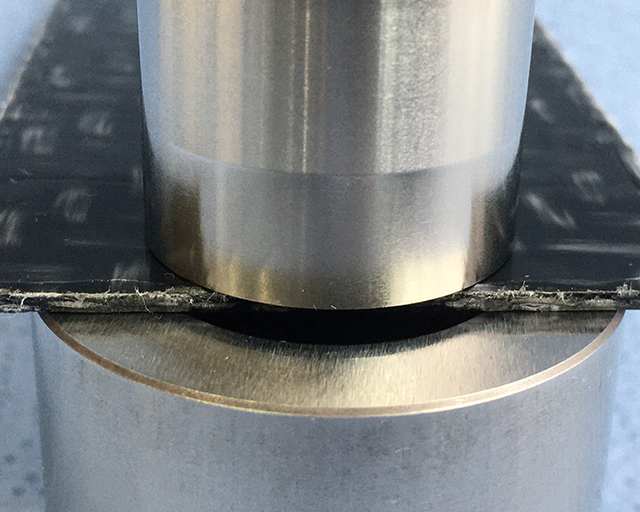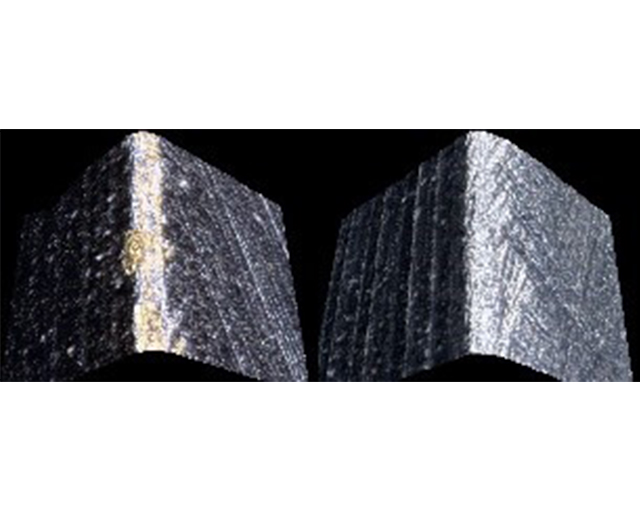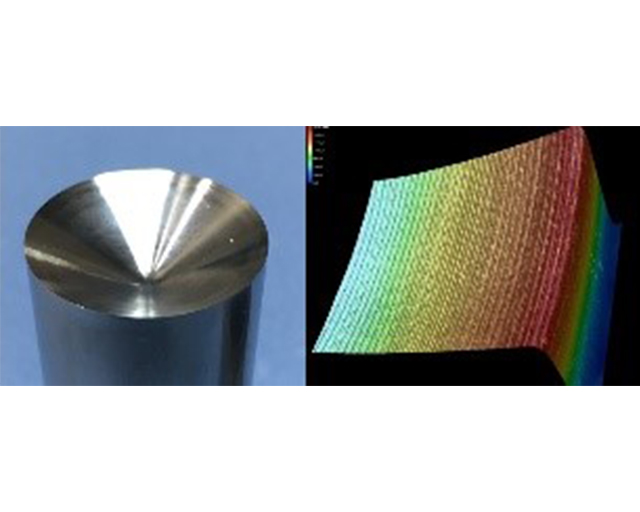In order to exploit the potential of new lightweight construction concepts, components made from fiber-reinforced plastics (FRP) must be processed and produced economically. There is no alternative to the high efficiency of shear cutting for high-volume production. By developing suitable tool coatings, tool geometries and process parameters, this project established basic principles for the economical processing of fiber-composite materials using shear-cutting processes. The project focused particularly on quality and long tool life.
Tool coatings for cutting fiber-composite plastics

Challenges in the shear-cutting of FRP
Active parts for shear-cutting processes are currently optimized for sheet-metal processing and tend to cause high tool wear and poor cut quality, e. g. in the form of fiber pullouts or delamination, when shear-cutting FRP materials. The complex combinations of different matrix plastics with, for example, solid (carbon fibers, CF) or abrasive (glass fibers, GF) fibers, different fiber contents and fiber directions present further challenges for active parts in terms of material, coating, tool geometry and cutting-process parameters of organic sheet material or tape.
Solution approach and results
In order to be able to determine which tool coatings, nitriding, tool geometries and cutting-process parameters might be suitable, these were investigated, tested and compared with one another in various versions. Measurements taken on variously coated surfaces and the determination of tribological behavior against FRP, wear behavior, and component or release quality in cutting tests allowed property/parameter correlations and recommendations to be derived.
With active parts coated for specific applications, the project was able to achieve performance improvements such as wear reduction of around 70 percent. Furthermore, the tests showed that drawing cuts such as bevel cuts with a small wedge angle as well as a small kerf achieve good cutting results.
Suitable tool coatings, geometries and stamping-process parameters are essential for the economical trimming of FRP components. Through the project results and application recommendations, important preliminary work has been carried out which enables the manufacture of FRP components in an automated, reproducible and efficient manner. As a result, this high-performance material has been made more attractive for sectors such as the automotive industry. The expertise acquired supports users, toolmakers, coaters and FRP manufacturers in positioning themselves on the market and opening up further fields of application.

Outlook
Despite the results and correlations obtained, it was not possible to investigate in detail all the complex relationships between surface hardness, wear resistance, cutting edge, material, process parameters and cutting forces within the scope of the project. Further development work with the support of model-based data acquisition and evaluation is therefore planned in order to acquire a valid representation and detection of the correlations.
The project
The project ”Entwicklung von Beschichtungen für Werkzeug-Aktivelemente zum Scherschneiden von Faserverbundwerkstoffen” (Development of coatings for active tool elements for the shear cutting of fiber composites), IGF project no. 20416 N, was performed in collaboration between the Forschungsgemeinschaft Werkzeuge und Werkstoffe (FGW, research association for tools and materials), the Institut für Werkzeugforschung und Werkstoffe (IFW, institute for tool research and materials) and the Fraunhofer Institute for Production Technology IPT. It was funded by the German Federation of Industrial Research Associations (AiF) as part of the program to promote cooperative industrial research (IGF) by the German Federal Ministry of Economic Affairs and Climate Action (BMWK) on the basis of a resolution by the German Bundestag.
This article is part of the Annual Report 2021.


